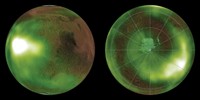Advertisement
Grab your lab coat. Let's get started
Welcome!
Welcome!
Create an account below to get 6 C&EN articles per month, receive newsletters and more - all free.
It seems this is your first time logging in online. Please enter the following information to continue.
As an ACS member you automatically get access to this site. All we need is few more details to create your reading experience.
Not you? Sign in with a different account.
Not you? Sign in with a different account.
ERROR 1
ERROR 1
ERROR 2
ERROR 2
ERROR 2
ERROR 2
ERROR 2
Password and Confirm password must match.
If you have an ACS member number, please enter it here so we can link this account to your membership. (optional)
ERROR 2
ACS values your privacy. By submitting your information, you are gaining access to C&EN and subscribing to our weekly newsletter. We use the information you provide to make your reading experience better, and we will never sell your data to third party members.
Physical Chemistry
Steam detected on extrasolar planet
by Sarah Everts
July 16, 2007
| A version of this story appeared in
Volume 85, Issue 29
The toasty atmosphere around the planet HD 189733b boasts some very hot water, the first convincing evidence of this much-sought substance on a planet outside our own solar system (Nature, DOI: 10.1038/nature06002).
HD 189733b, shown in the foreground in this artist's rendition, is just over 60 light years from Earth, but it is so close to its parent star in the constellation of Vulpeca the Fox that atmospheric temperatures on the planet can reach a sweltering 1,200 K. This means the water is present as a vapor but is unlikely to form clouds.
An international team of researchers led by Giovanna Tinetti at the European Space Agency detected the steamy water by making use of some convenient astrogeometry.
With every revolution, HD 189733b passes directly in front of its star in a planetary eclipse, as viewed from Earth. The researchers were able to use NASA's Spitzer Space Telescope to detect water absorption from starlight that is transmitted through the planet's atmosphere during the eclipse.






Join the conversation
Contact the reporter
Submit a Letter to the Editor for publication
Engage with us on Twitter